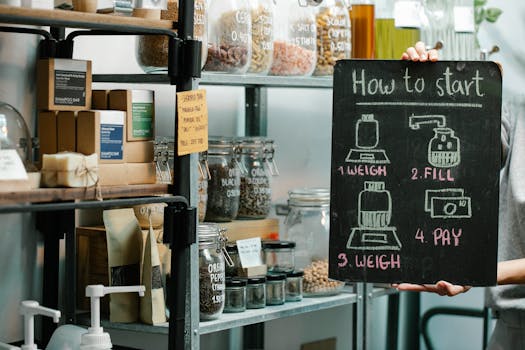
Sustainable Packaging: A Pricey Paradox? Unpacking Consumer Willingness to Pay
The global push towards eco-friendly practices has significantly impacted the packaging industry. Consumers are increasingly aware of the environmental consequences of excessive waste and the detrimental effects of single-use plastics. This heightened awareness has led to a surge in demand for sustainable packaging options like biodegradable packaging, compostable packaging, and recycled packaging materials. However, a fascinating paradox emerges: while consumers express a strong preference for sustainable choices, their willingness to pay (WTP) for these options varies significantly, presenting a complex challenge for businesses and policymakers alike. This article delves into the nuances of consumer behavior regarding sustainable packaging, exploring the factors influencing WTP and highlighting the implications for the future of the packaging industry.
The Growing Demand for Eco-Friendly Packaging
The market for sustainable packaging is experiencing explosive growth. Driven by stricter environmental regulations, corporate social responsibility (CSR) initiatives, and consumer activism, businesses are actively seeking ways to reduce their environmental footprint. This trend is reflected in the increasing adoption of:
- Bioplastics: Derived from renewable biomass sources, bioplastics offer a more sustainable alternative to traditional petroleum-based plastics.
- Compostable Packaging: These materials break down naturally in composting facilities, minimizing landfill waste.
- Recycled Content Packaging: Utilizing recycled materials reduces the demand for virgin resources and lowers carbon emissions.
- Reduced Packaging: Minimizing the amount of packaging used is a crucial aspect of sustainable packaging strategies.
- Reusable Packaging: Initiatives promoting reusable containers and packaging systems are gaining traction.
These innovations are promising, but their widespread adoption hinges on consumer acceptance and, crucially, their willingness to pay a premium for these environmentally friendly alternatives.
The Gap Between Intention and Action: Understanding Consumer Behavior
Despite vocal support for sustainability, consumer behavior often reveals a discrepancy between stated preferences and actual purchasing decisions. Surveys frequently show a high percentage of consumers claiming to be willing to pay more for sustainable packaging. However, when faced with price differences at the point of sale, this willingness often diminishes. This gap highlights the complexities of consumer psychology and the importance of understanding the factors that influence WTP.
Factors Influencing Willingness to Pay for Sustainable Packaging:
- Price Sensitivity: A significant barrier to widespread adoption is the often higher cost of sustainable packaging. Consumers, particularly those with budget constraints, may prioritize affordability over sustainability. This price sensitivity is particularly pronounced for everyday consumer goods.
- Perceived Value: Consumers need to perceive a clear value proposition beyond the environmental benefit. Features like improved product protection, enhanced aesthetics, or convenience can positively influence WTP.
- Brand Trust and Transparency: Consumers are more likely to pay a premium for sustainable packaging from brands they trust and perceive as genuinely committed to sustainability. Transparent labeling and clear communication regarding the environmental credentials of the packaging are essential.
- Product Category: WTP varies significantly across different product categories. Consumers might be more willing to pay extra for sustainable packaging for premium or luxury goods than for everyday staples.
- Information Availability and Education: Limited awareness of the environmental impact of different packaging types can hinder consumer choice. Clear and accessible information is crucial to educate consumers and empower them to make informed decisions.
- Government Incentives and Regulations: Policies like carbon taxes, extended producer responsibility (EPR) schemes, and subsidies for sustainable packaging can significantly influence consumer behavior by making sustainable options more competitive.
Bridging the Gap: Strategies for Increasing WTP
Encouraging consumers to prioritize sustainability requires a multi-faceted approach. Businesses need to adopt innovative strategies to bridge the gap between intention and action:
- Highlighting the Value Proposition: Focus on communicating the tangible benefits of sustainable packaging beyond the environmental aspect, such as improved product quality or extended shelf life.
- Investing in Transparent Labeling: Clear and concise labeling that details the sustainable attributes of the packaging will build consumer trust and increase transparency.
- Building Brand Trust Through Sustainability Initiatives: Demonstrate a genuine commitment to sustainability through corporate social responsibility (CSR) programs and transparent reporting.
- Offering Premium Sustainable Options: While not all products will support premium pricing, offering higher-end sustainable alternatives within a product range can target consumers willing to pay more.
- Exploring Innovative Packaging Solutions: Investing in research and development to create more cost-effective and efficient sustainable packaging solutions will help lower prices and increase accessibility.
- Leveraging Consumer Education: Partnering with environmental organizations and educational initiatives to raise awareness about the importance of sustainable packaging is crucial.
The Future of Sustainable Packaging
The future of the packaging industry depends on addressing the complexities of consumer WTP. Collaboration between businesses, policymakers, and consumers is crucial to achieve widespread adoption of sustainable packaging. By focusing on transparent communication, innovative solutions, and supportive policies, we can create a more sustainable future for packaging, reducing environmental impact while meeting consumer expectations. The journey towards truly sustainable packaging requires a holistic approach, embracing both innovation and a deeper understanding of consumer preferences and behavior. Only through such a combined effort can we hope to realize a truly circular economy, minimizing waste and safeguarding the environment for future generations.


















